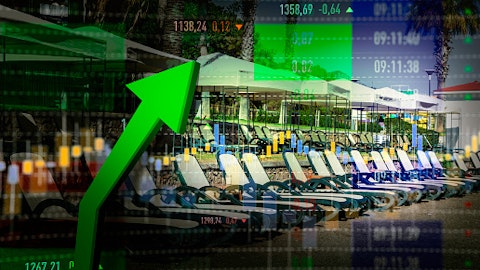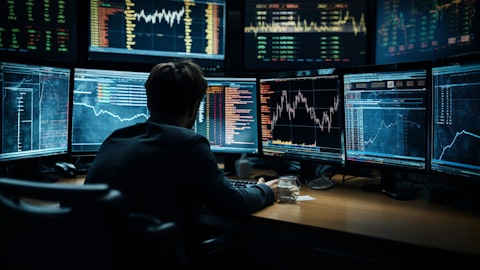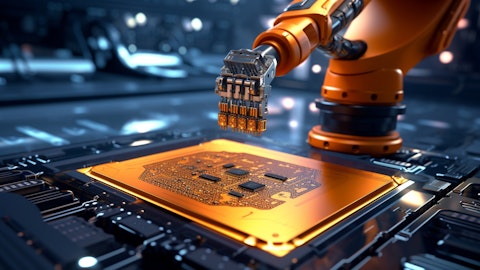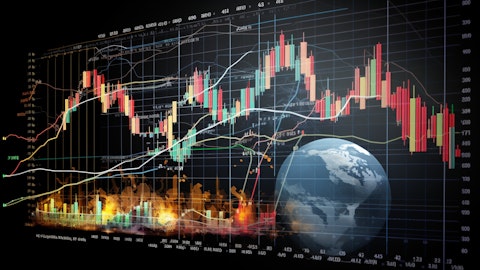Peter Wennink: Yes. I think a good question, Andrew. I think the longer-term let’s say, positions that customers have taken a pretty rock solid. I think they will happen. Now the question is about timing and timing could be a function of the things that you just mentioned. I mean is there enough capable resources or are there capable resources, people. Will permits and/or all the things that are necessary like energy and water will all be available on time. Those are, you could say, tactical and operational considerations that are always there. Now we have examples where we have indeed delays because of the things that you just mentioned. We also have examples where things are spot on time. So it’s really very dependent on the specific situation of a specific fab.
I think the intentions are very clear. We don’t see any delay there. We could seek operational or delays that will push things back 6 months or 9 months that could happen. But generally, those fabs are there, those steps are there in the U.S. They’re in Japan. They’re in Taiwan, they’re in Korea, they’re in China, they’re in Europe. I mean, we don’t see any indication or any customer messaging to us that those things won’t happen. Yes, there could be some regional issues. But we also have some good examples that give you Japan, for instance. Things will happen on the dot. So that’s will probably also like to happen in Germany. So it’s — these are things that will happen. And in other areas, there might be more problems with, like you mentioned it, water, energy, people building restrictions and stuff like that.
But that’s normal. That’s our business.
Andrew Gardiner: Understood. And then just a quick mathematics clarification, if I could. Did you say €38 billion or €39 billion worth of ending backlog?
Peter Wennink: €39 billion.
Roger Dassen: €39 billion.
Andrew Gardiner: And so if we think of the guidance you guys have set for ’24, sort of the toll revenue within that, that implies that you’ve got about sort of mid-teens or so already booked for 2025. Is that a correct assumption?
Peter Wennink: I think we’re booking nicely into 2025. Now — which also means that we need to still book a lot for the remainder of the year but that’s why we’re still January of ’24 — till we have some time to go. But yes, we’re booking nicely into 2025, especially for EV.
Roger Dassen: But when you say mid-teens, you do make the adjustment, obviously, for the installed base business, right Andrew?
Andrew Gardiner: Yes.
Roger Dassen: Because that obviously needs to be at then I get a bit higher than mites; that’s okay.
Operator: And your next question comes from the line of [indiscernible] from Cantor Fitzgerald.
Unidentified Analyst: I guess first question on memory. So, a couple of parts here. Were you surprised that memory ended up 10% for you. And if you think about the magnitude of the record orders in the December quarter, can you kind of separate CXP and ashore domestic China versus kind of the technology buys that you’re seeing out of Korea and the U.S.
Peter Wennink: Yes. I think very easy answer that technology buys are dominant. Yes. So — and they’re also very much focused on the technology transition, so EUV. And were we surprised? I must be — I say yes, certainly we were surprised in the mites we’ve had with customers and especially the Memory because we’re leading-edge memory customers. We were surprised about the technology requirements of for litho, EUV specifically and how it impacts how important it is for the rollout and the ramp of the memory solutions for AI. This is why we received more EUV orders than we anticipated because it was obvious in the detailed discussions and the reviews with our customers, that EUV is critical in that sense. And that was a bit of a surprise, it’s a positive surprise. But that’s what we learned. So yes, a surprise, yes.
Unidentified Analyst: Sorry, was that a function of EUV layer count or perhaps where they’re repurposing equipment? And so now they’re realizing they need more footprint [ph].
Peter Wennink: No, it is lay account and imaging performance. And that’s what led to the surprise, the positive surprise which need led to more orders.
Unidentified Analyst: Perfect. And just a quick follow-up on High-NA. Can you kind of update us on your planned shipments and revenue for calendar ’25 and how you expect to kind of shrink that time frame between shipping and revenuing? And as part of that number, how should we think about the overlay of memory adoption into ’25, ’26, ’27?
Roger Dassen: Yes. So CJ, the revenue for 2025, as you know at the Capital Markets Day, we expect 5 systems in revenue and that’s still the way we look at it. There will be more shipments but it’s a bit too early to say how exactly is the revenue recognition going to work is, as you know, we just shipped only the first modules of the first tool. It’s a bit early. But the 5% in revenue, that’s still the way we look at it. In terms of the introduction of high NA into memory, I think that’s consistent with what we had at an earlier question. We do see the time frame of memory and logic adoption more or less in sync. So to us, that is more or less the same timeframe.
Skip Miller: Yes. So we have time for one last question. If you were unable to get through on this call and still have questions, please feel free to contact the ASML Investor Relations department with your question. Now operator, may we have the last caller, please?
Operator: And the question comes from the line of Sandeep Deshpande from JPMorgan.





